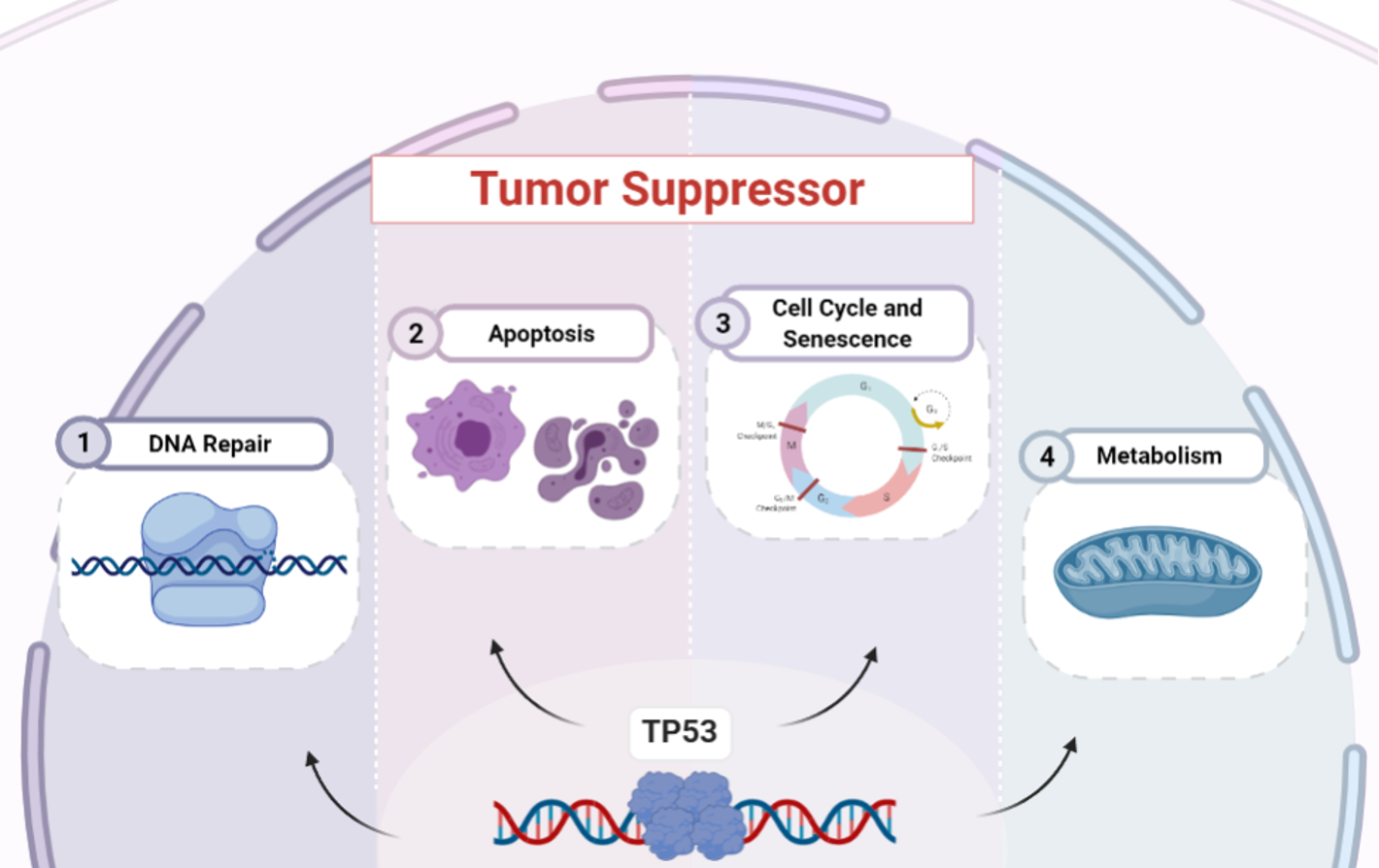Research
Our lab seeks to understand how tumour suppressors control fundamental cellular process and thereby prevent tumour development. The tumour suppressor gene p53 is mutated in more than half of the human cancers. Society currently faces extensive morbidity and mortality associated with p53-defective cancers, as targeting those tumors is currently a big clinical challenge. Persons with Li-Fraumeni syndrome that have germ-line heterozygous mutations in p53 are highly predisposed to diverse cancers at a young age. As a prerequisite for successful clinical translation the key targets and pathways for p53 tumor suppression have to be identified, and their modes of action have to be very well understood. Recently the evidence that DNA repair is an essential process underlying p53-mediated cancer suppression, has overturned the belief that p53 prevents the development of cancer by instructing cells to die.
In line with this hypothesis our laboratories current research focuses on answering following questions i) how p53 controls a DNA repair–coordinated program to protect tumorigenesis; ii) how tissue specificity controls which p53-regulated DNA repair effectors are crucial for tumor suppression and iii) how we could use p53-dependent DNA repair signaling therapeutically to kill tumor cells. Additionally, our laboratory is studying p53 target genes, which play roles in the process of malignant transformation. One such target, ZMAT3 is a double-stranded RNA binding zinc finger protein whose function in tumorigenesis is relatively unknown. In our laboratory we are investigating the contribution of ZMAT3 to tumorigenesis in vivo by using unique Zmat3 knockout mice. Together, our research program is dedicated to understanding the complex p53 tumour suppression transcriptional network in different tissues and in the context of distinct oncogenic drivers. To address this we are using novel genetically modified mouse models, genomic and molecular biology approaches. Importantly, the knowledge gained from our research will provide valuable insights on how the tumour suppressive activities of p53 can be restored in cancer for improved treatments.

Model for p53-mediated tumour suppression
Image courtesy of Julia Urgel
